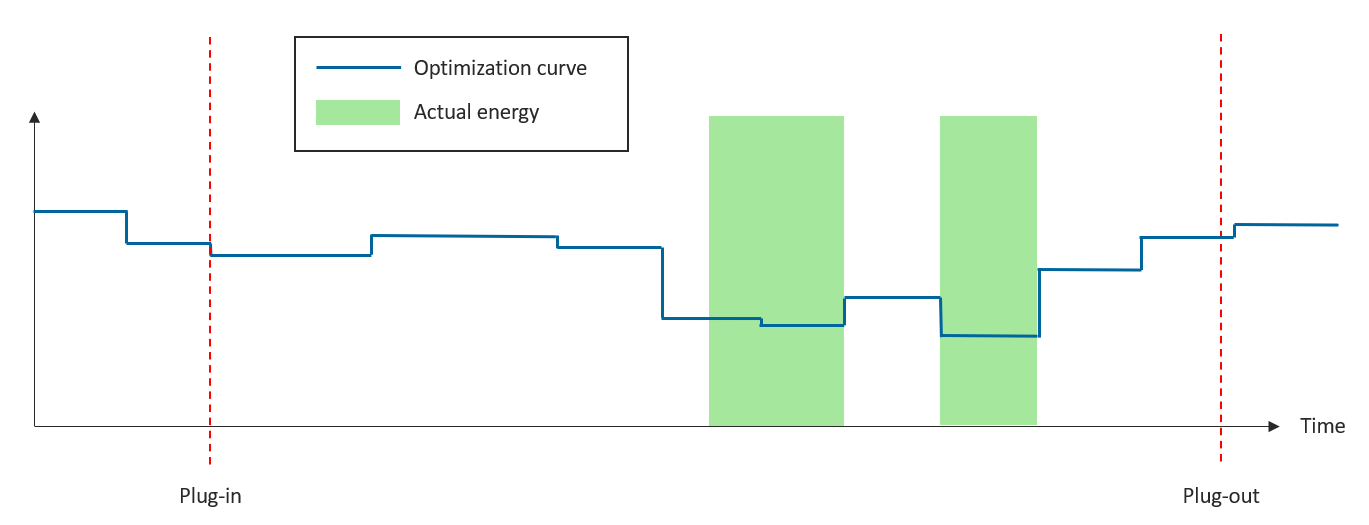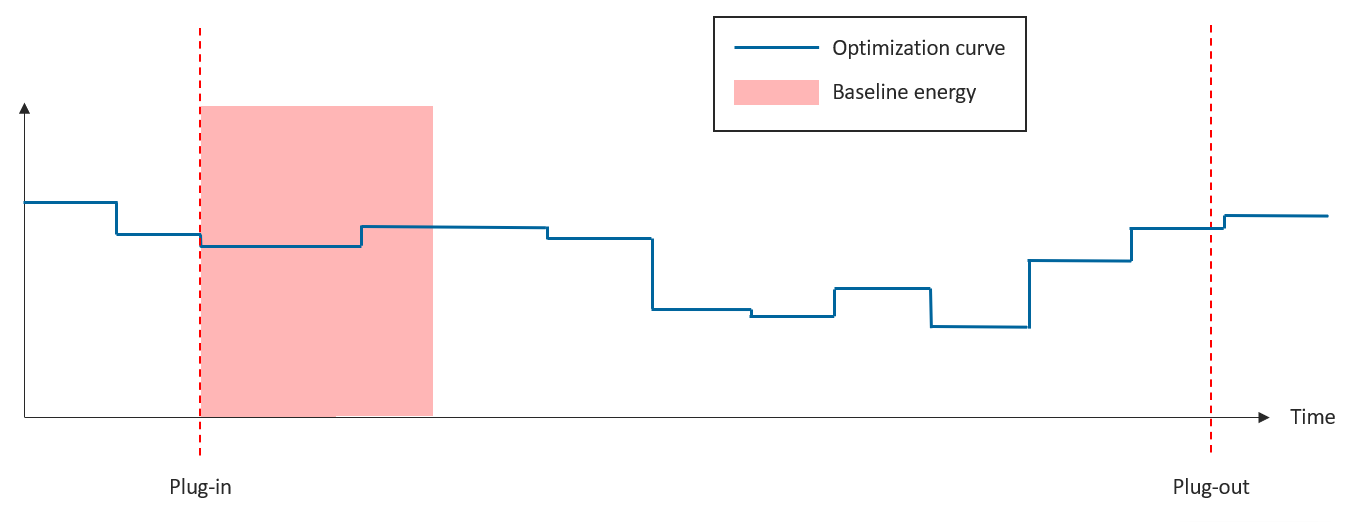Energy charged
The Jedlix platform receives telemetry data from EVs or chargers, which often includes battery level, energy added, or power. This varies depending on the asset type, brand, and model. To determine the amount of energy charged during a session and when it was charged, Jedlix calculates two different types of volumes:
- Actual volumes
- Baseline volume
Actual Energy Charged
The actual energy represents the volumes over time for charging sessions as they occurred. This data is updated every time a telemetry update is received during a smart charging session and is based on the car's telemetry updates. Some cars provide information on how much energy is added during the session, while others do not. For the latter, battery capacity information and increases in SoC values are used to calculate the energy added between two data points. The energy added is interpolated between telemetry updates when needed.
In the Jedlix platform, actual volumes are often referred to as "Optimized". This volume represents the energy consumed due to user behavior and optimization.

Baseline energy charged
The baseline energy charged provides a reconstruction of the volumes over time that would have been charged if no optimization was applied to the charging session. This data is calculated when the smart charging session ends and virtually "shifts" the actual energy back to the session start time. In this case, we assume the vehicle would start charging as soon as it is connected to the charger. The baseline energy charged is determined from the using the actual energy charged.

Updated 3 months ago
